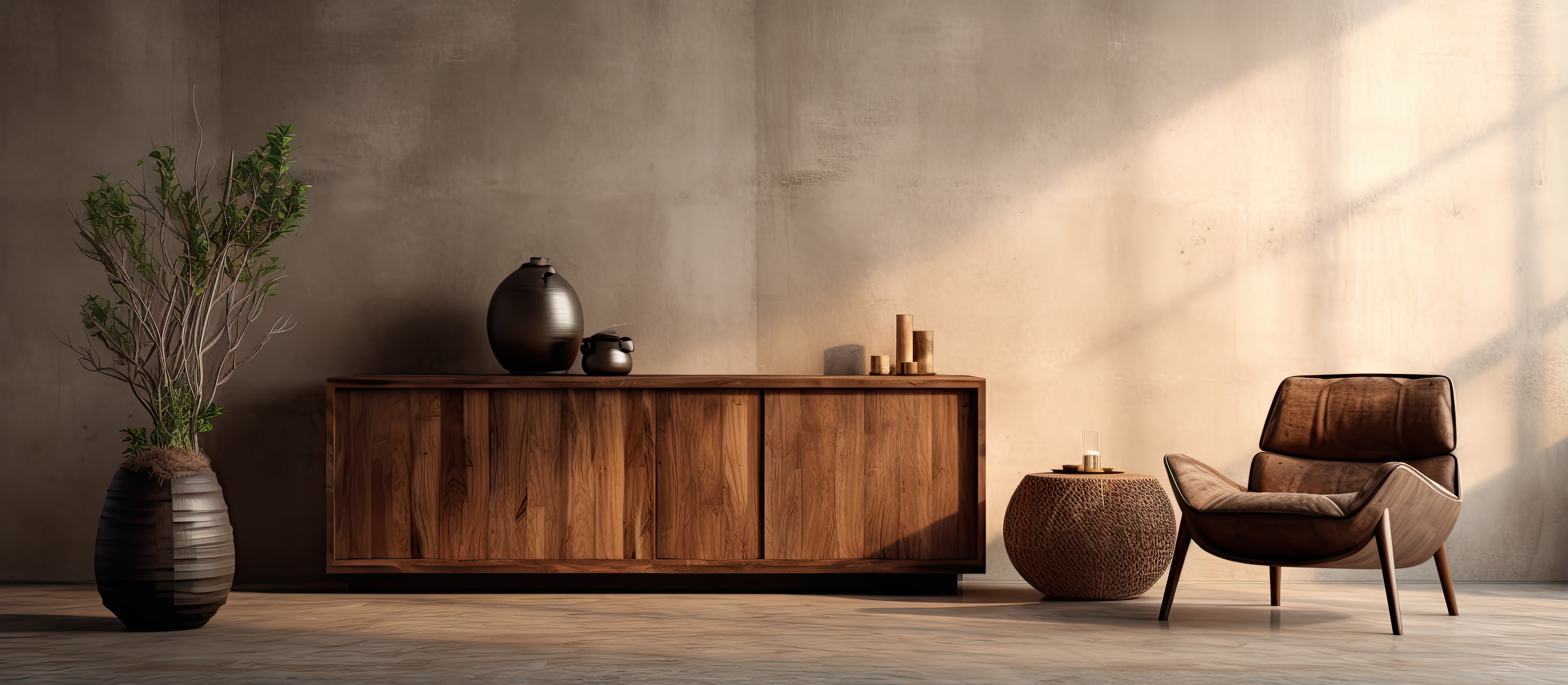FurniTrends
1. Understand Your Space and Layout
Before you step into a furniture store or browse online, take time to study your home layout.
-
Measure Accurately: Always measure your room dimensions, including doorways and window placements. Oversized furniture can make a room look cramped.
-
Define Purpose: Decide how you will use the space. For example, a living room may double up as a home office, so multifunctional furniture like a sofa-cum-bed or storage ottoman can be useful.
-
Balance and Flow: Keep enough walking space so the room feels open and inviting.

2. Choose Furniture by Room Function
🛋️ Living Room
-
Wooden Sofas & Sofa Sets
-
Coffee Tables & Side Tables
-
TV Units & Entertainment Consoles
-
Wooden Bookshelves & Display Cabinets
🛏️ Bedroom
-
Wooden Beds (King, Queen, Storage Beds)
-
Wardrobes (Sliding, Hinged, Modular)
-
Bedside Tables & Dressing Units
-
Study Desks for personal workspaces
🍴 Dining Area
-
Wooden Dining Tables (4-Seater, 6-Seater, Extendable)
-
Matching Wooden Chairs or Benches
-
Crockery Units & Sideboards
🏢 Workspace / Study
-
Ergonomic Wooden Study Desks
-
Office Chairs with Comfort Support
-
Wall-Mounted Wooden Shelves
3. Select the Right Material
The choice of material affects the look, strength, and maintenance of your furniture.
-
Solid Wood (Teak, Sheesham, Oak, Mango): Long-lasting, timeless, and adds warmth.
-
Engineered Wood (Plywood, MDF, Particleboard): Affordable and versatile, perfect for modular furniture.
-
Metal & Glass: Sleek, modern, easy to clean, and space-enhancing.
-
Upholstered Furniture: Soft, stylish, and comfortable for long sitting hours.
🌳 Solid Wood Furniture: Teak, Sheesham, Oak & Mango
Solid wood has always been the gold standard in furniture making. Unlike engineered materials, solid wood is durable, naturally beautiful, and ages gracefully over time. Each type of wood carries its own unique grain, texture, and strength, making it a timeless choice for homeowners who want furniture that lasts for generations.
🔹 1. Teak Wood
-
Known as the “King of Woods.”
-
Highly resistant to water, termites, and weather changes.
-
Rich golden-brown color with natural oils that preserve the wood.
-
Perfect for premium indoor & outdoor furniture like dining sets, beds, and garden benches.
🔹 2. Sheesham Wood (Indian Rosewood)
-
Strong, durable, and termite-resistant.
-
Distinctive grains with natural dark and light shades.
-
Affordable compared to teak but equally beautiful.
-
Commonly used in sofas, wardrobes, cabinets, and traditional carved furniture.
🔹 3. Oak Wood
-
Popular in European and American furniture design.
-
Dense, strong, and extremely durable.
-
Available in red oak (warm tone) and white oak (light tone).
-
Excellent for beds, wardrobes, and flooring because of its high load-bearing capacity.
🔹 4. Mango Wood
-
Eco-friendly and sustainable (sourced from mango plantations after fruit-bearing years).
-
Lightweight yet sturdy.
-
Attractive natural patterns with warm tones.
-
Ideal for budget-friendly furniture like coffee tables, bookshelves, and dining sets.
✅ Why Choose Solid Wood?
-
Durability: Lasts for decades with proper care.
-
Timeless Appeal: Natural textures and colors never go out of style.
-
Value for Money: Though costlier upfront, solid wood offers long-term savings.
-
Eco-Friendly: Especially in the case of mango and responsibly sourced teak.
Engineered Wood Furniture: Plywood, MDF & Particleboard
While solid wood is timeless and strong, engineered wood has gained massive popularity in modern homes. It is affordable, versatile, and widely used in modular furniture, wardrobes, kitchens, and office furniture. Engineered wood is created by combining wood fibers, veneers, or particles with adhesives under heat and pressure, making it cost-effective and adaptable to different designs.
🔹 1. Plywood
-
What it is: Layers of thin wood veneers glued together with grains placed at right angles.
-
Strengths:
-
Stronger and more durable than MDF or particleboard.
-
Resistant to warping and cracking.
-
Can hold screws and nails well.
-
-
Best Uses: Beds, sofas, wardrobes, dining tables, kitchen cabinets.
👉 Tip: Always look for boiling waterproof (BWP) plywood for kitchens and bathrooms.
🔹 2. MDF (Medium-Density Fiberboard)
-
What it is: Made by breaking down hardwood/softwood fibers, combining with resin, and pressing into panels.
-
Strengths:
-
Smooth surface, perfect for painting and laminates.
-
Affordable compared to solid wood and plywood.
-
Allows intricate designs and carvings.
-
-
Limitations:
-
Less durable than plywood.
-
Not very water-resistant.
-
-
Best Uses: Decorative furniture, wall panels, modular wardrobes, TV units.
👉 Tip: MDF is ideal for interior furniture but avoid it in high-moisture areas.
🔹 3. Particleboard
-
What it is: Made from wood chips, sawdust, and shavings compressed with resin.
-
Strengths:
-
Very economical and lightweight.
-
Smooth surface for laminates and veneers.
-
-
Limitations:
-
Least durable of the three.
-
Can sag under heavy weight.
-
Not moisture-resistant.
-
-
Best Uses: Low-cost furniture, bookshelves, temporary furniture, or budget wardrobes.
👉 Tip: Particleboard works well in light-use areas, but avoid for beds or heavy storage.
✅ Why Choose Engineered Wood?
-
Affordable: Much cheaper than solid wood.
-
Versatile: Wide variety of finishes (laminate, veneer, paint).
-
Eco-Friendly: Utilizes leftover wood, reducing waste.
-
Modern Designs: Perfect for modular and space-saving furniture.
🚪 Conclusion
Engineered wood options like plywood, MDF, and particleboard have revolutionized the furniture industry. While plywood is best for strength, MDF is excellent for designs, and particleboard works for budget furniture. Choosing the right type depends on usage, budget, and placement.
🛋️ Upholstered Furniture: Comfort Meets Style
When it comes to creating a cozy and luxurious atmosphere, upholstered furniture is the perfect choice. Unlike wooden or metal furniture, upholstered pieces are covered with fabric, leather, or synthetic materials along with padding, making them not only stylish but also extremely comfortable. From elegant sofas to plush beds, upholstered furniture brings softness and sophistication into any space.
🔹 What is Upholstered Furniture?
Upholstered furniture refers to any item that has a soft covering over cushioning materials, such as foam, cotton, or fiber. It provides both comfort and aesthetic appeal, making it ideal for living rooms, bedrooms, and lounges.
Common upholstered pieces include:
-
Sofas & Sofa Sets
-
Armchairs & Recliners
-
Dining Chairs
-
Upholstered Beds & Headboards
-
Benches, Ottomans, and Poufs
🔹 Types of Upholstery Materials
1. Fabric Upholstery
-
Wide variety of colors, textures, and prints.
-
Comfortable and breathable.
-
Perfect for casual and cozy interiors.
👉 Best For: Living room sofas, lounge chairs, upholstered beds.
2. Leather Upholstery
-
Luxurious, durable, and timeless.
-
Easy to clean and resistant to spills.
-
Ages beautifully with a natural patina.
👉 Best For: Executive chairs, recliners, luxury sofa sets.
3. Leatherette (Faux Leather) Upholstery
-
Budget-friendly alternative to leather.
-
Water-resistant and easy to maintain.
-
Available in multiple shades and finishes.
👉 Best For: Dining chairs, modern sofas, office furniture.
4. Velvet Upholstery
-
Soft, elegant, and adds a royal touch.
-
Available in bold and rich colors.
-
Requires more care compared to leather or fabric.
👉 Best For: Accent chairs, luxury beds, statement sofas.
🔹 Advantages of Upholstered Furniture
✔ Adds warmth and coziness to any room.
✔ Wide variety of fabrics, patterns, and styles.
✔ Comfortable seating and lounging experience.
✔ Suits both modern and traditional interiors.
✔ Can be customized with removable covers.🔹 Things to Consider Before Buying
-
Lifestyle Needs: Families with kids or pets may prefer leatherette or stain-resistant fabrics.
-
Maintenance: Some fabrics need regular cleaning or vacuuming.
-
Durability: Leather and high-quality fabrics last longer than low-cost upholstery.
-
Style & Color: Choose neutral tones for versatility, bold colors for statement furniture.
🔹 Upholstered Furniture Trends 2025
-
Neutral Shades with Pops of Color – Beige, gray, cream combined with cushions in bold tones.
-
Curved Sofas & Chairs – Softer silhouettes for modern living rooms.
-
Sustainable Fabrics – Eco-friendly cotton, jute blends, and recycled fibers.
-
Multi-Functional Upholstery – Sofa-cum-beds, storage ottomans, modular sectionals.
✅ Conclusion
Upholstered furniture beautifully combines comfort, design, and luxury. Whether it’s a plush sofa for your living room, a cozy upholstered bed for restful nights, or a velvet chair for a touch of elegance, upholstery adds character and warmth to your interiors. With the right choice of material, style, and care, upholstered furniture can transform your home into a truly inviting space.
-
4. Focus on Style & Design
Furniture should reflect your personality while blending with your interiors:
-
Modern Minimalist: Clean lines, neutral tones, functional pieces.
-
Traditional & Rustic: Hand-carved wooden furniture with classic designs.
-
Luxury Contemporary: Glossy finishes, plush fabrics, and bold shapes.
-
Space-Saving Modular: Foldable dining tables, wall beds, modular wardrobes.
5. Comfort Comes First
A sofa may look elegant, but if it isn’t comfortable, it won’t serve its purpose. Test mattresses for firmness, check sofa cushions for support, and ensure chairs have good back support.
6. Quality Check Before Buying
-
Inspect wood joints and finishes carefully.
-
Ensure drawers and sliding doors move smoothly.
-
Ask about warranties, especially for beds, wardrobes, and sofas.
-
Check for termite-resistant treatments in wooden furniture.
7. Add Personal Touches
Furniture sets the foundation, but accessories bring personality to a home. Add:
-
Soft furnishings like cushions, rugs, and throws.
-
Indoor plants for a natural vibe.
-
Wooden décor pieces like shelves, clocks, and lamps.
-
Customized upholstery in your favorite fabrics.
8. Budget Planning
Furniture is an investment. Plan your budget wisely:
-
Essential Furniture First: Bed, sofa, dining table, wardrobe.
-
Upgrade Later: Decorative pieces, side tables, bookshelves.
-
Mix & Match: Combine solid wood essentials with budget-friendly modular or engineered wood items.





